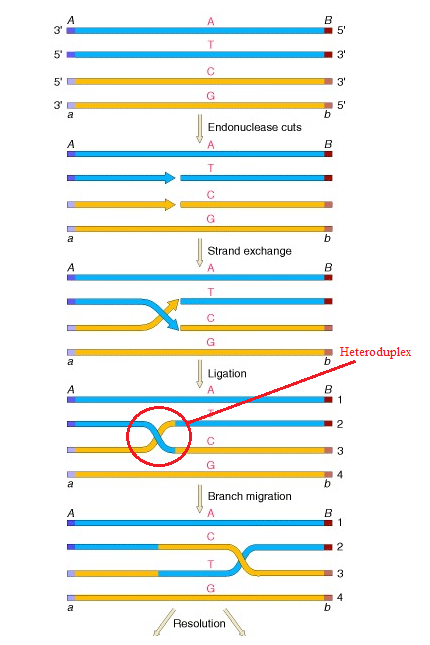I fail to understand the what exactly is heteroduplex due to unavailability of a suitable diagram. According to wikipidea:
A heteroduplex is a double-stranded (duplex) molecule of nucleic acid originated through the genetic recombination of single complementary strands derived from different sources, such as from different homologous chromosomes or even from different organisms.
Should the following highlighted structure be called heteroduplex?


